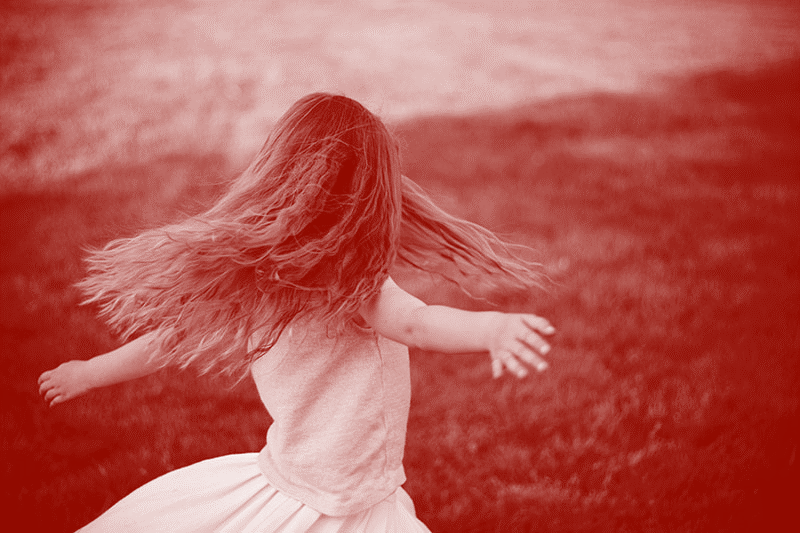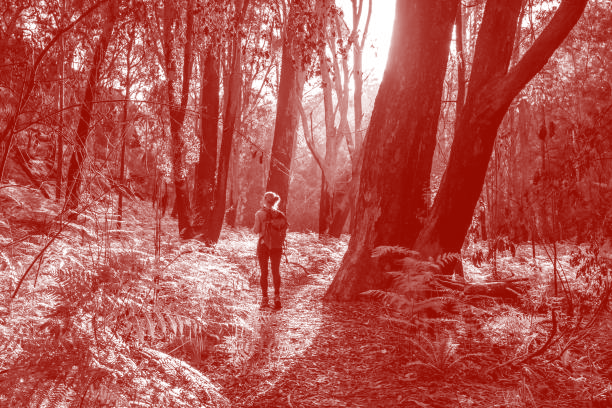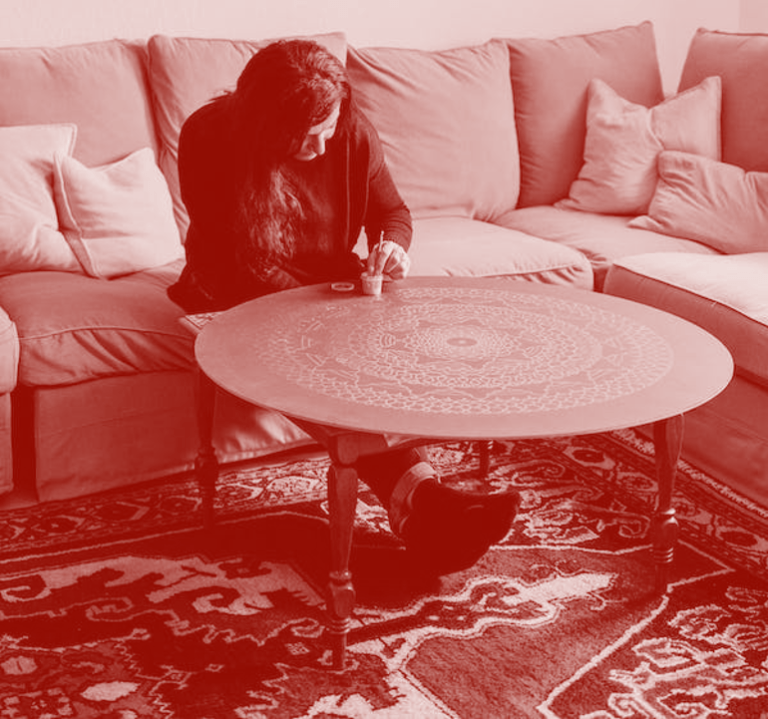Active Meditation
benefits & techniques
stimulating mind & body to effect personal progression

In the second year of association and beyond, communitarians align their lifestyles with the practice of observing seven daily personal progression principles, which includes the twice daily practice of Active Meditation. There are many forms of Active Meditation including: free-form dance, yoga, Tai Chi, swimming, cycling, painting, walking, gardening, creating and colouring mandalas, as well as, knitting and other types of crafting.
Active Meditation offers abundant opportunities to stimulate and increase the flow of ‘life force’, enhancing both the mental and physical health of those who commit to practicing this daily observance. When an entire community conscientiously commits to raising the level of ‘life force’ flowing within the collective, major contributions to progress and practical productivity are achieved.
The central form of ‘Active Meditation’ practiced by communitarians at least once a day, for a half-hour to an hour or more, centres around intense physical movement and vocalizations, followed by stillness and silence.
While the infamous Bhagwan Shree Rajneesh, later known as Osho, was not the originator of the root techniques of Active Meditation, the Indian Guru is certainly entitled to be credited with introducing this form of meditation to the west, as well as, reviving its core methods throughout Indian Ashrams and Eastern Yoga retreats.
Over a period of twenty years, Osho taught more than a hundred different meditation techniques. However, he believed that a meditation style involving physical activity could be more easily and better assimilated by those living in fast-paced and hyper-active modern environments. For these reasons Osho promoted a style of meditation designed to quickly calm the mind and open the channels to integrated awareness and relationship with the wider world, as well as, contemplation of the mysterious cosmos through activity rather than the traditional meditation techniques of passive sitting to empty the mind of stress, distractions and tension.
benefits of active meditation
An active form of meditation provides many benefits due to movements ability to rapidly stir stagnant ‘life force’ as well as generate energy in its wake. Those who practice active forms of meditation report positive results ranging from better stress management and overall stress reduction to increased inner peace, mental clarity and improved focus, along with enhanced physical, mental and emotional wellbeing.
For thousands of years, those who practice daily Active Meditation, attest to the method’s capacity to provide a path to lasting states of both mental and physical relaxation. This type of relief from accumulated mental stress and physical tension is very much needed in the current age of high stress environments where supported, secure and functionally sustainable cooperative living is sorely lacking.
The body’s natural ‘fight or flight response’ is geared to activate during times of physical threat, pumping adrenaline into the blood stream to signal the urgency to run from a predator or other life-threatening danger. Once the threat has passed, the nervous system is designed to return to a normal state of relaxation. However, in the present day and age, stress is more emotional and mental than physical. Nevertheless, our autonomous nervous system reacts the same way to emotional stress that it does to physical stressors.
Without proper awareness and remediation, the ‘fight or flight response’ can remain triggered long after the initial phase of stress has passed. Neglecting to ‘wind down’ and leaving our minds and bodies in a state of chronic stress has been proven to lead to serious health conditions, such as psychosis and cancer. It is therefore important to daily consciously and deliberately destress both the mind and body – to release tension and come into a state of complete relaxation.
active meditation techniques
Active meditative activities are anything but rigid. There are a multitude of free-form methods of emptying the mind and strengthening the inner witness.
The easiest and most effective way to begin to release the nervous system from sympathetic stress is simple movement. For those starting out, a guided active meditation session will help get the process started. However, once a few basic techniques are learned, it is best to go off into a private space and just let flow whatever comes naturally.
Those who regularly practice Active Meditation usually begin by ‘shaking out’ the stress and tension held in the body. Most begin slowly and build up to greater and wilder freer movement over the course of the session. It is common for the initial phases of Active Meditation to be described as returning to ‘primal state’ – the zero point of the pendulum’s arc, midpoint between the polarities of positive and negative resonance – free, flowing, tranquil, calm, joyful.
Shaking and swaying while breathing deeply and rhythmically, effectively signals the body to align with the balance of the parasympathetic (relaxed) nervous system. These meditation techniques aid the modern-day seeker to experience inner silence and stillness a lot faster than can be achieved through a long session of passive sitting.
The initial stages of shaking, and or swaying, is then followed by vocalisations, such as laughing, crying, humming and even shouting. From there, a free-form style of dance usually emerges opening the way for the release and expression of whatever has been suppressed within both body and mind. Once released it becomes much easier to experience inner stillness in the silent phase of the meditation, which culminates in a slow fall to the floor or ground. In this phase, on the way to total stillness, the practitioner may softly groan while rolling the head from side to side in an effort to drain the last of any persistent tension held within the body.
From there, a phase of total surrender to the present is entered into for as long a time as desired. Now we enter a phase of utter bliss – complete connection with the present and the wholeness of our existence and relationship with ‘all there is.’
swirling to unwind

Whirling is a popular form of active meditation amongst communitarians who continue the Sufi tradition dating back to the 13th Century. Whirling dervish ceremonies were started as a form of meditation by the famous Sufi Muslim mystic and poet, Jalaluddin Rumi hin. For hundreds of years, the whirling dervishes have performed the mystical Sufi ceremony known as a Sema. As part of the practice, a fast-paced series of mesmerizing turns are executed, propelling the performer along with the audience, into a state of blissful trance, releasing stress and calling us to be present in the here and now.
This type of swirling seems to come naturally to children of all cultures across the globe. Most of us whirled around and around as children until we fell to the ground and watched the world spin around us. Swirling seems a very instinctive process that helps us ‘feel’ beyond the body while remaining a witness. When we whirl, it is as if the wheel moves while the axis remains stationary – ‘centred’ as the wheel moves around it. When we whirl with the awareness that the body is the wheel and the mind the centre, we can experience ourselves as both functionally existing in the outer and the inner, simultaneously.
walking as meditative practice

Without conscious thought, most of us walk for the sole purpose of getting from one place to another. However, the simple act of walking can be so easily turned into a sacred and intentional daily practice that brings us into alignment with place, purpose, people, peace and shared prosperity.
Walking meditations begin simply by taking a deep breath and slowly placing one foot and then the other, intentionally, mindfully, on the ground. Now, exhale while bringing awareness to the next step and the next. If the mind wanders, bring the focus back to the sole of the foot and breath deeply, consciously.
Meditative crafting

Many communitarians use knitting, crochet, sewing and other forms of artistic pursuit as Active Meditation. It is so easy to ‘lose’ oneself in hands-on hobbies which have easy and effective stress-relieving mindfulness components to them. The rhythmic and repetitive nature of knitting, weaving and needlework, as well as, sketching and painting are calming, comforting, and contemplative recreational pursuits that anyone can do anytime they have spare time and want to relax.
The added bonus of using crafting as a meditative practice is that there is something to show for the time spent in meditation. Similar to yoga, these slow, purposeful movements have the ability to quickly carry stress away from both mind and body.
Gardening as active meditation
As any experienced gardener knows, there is no greater bliss than to have hands in the dirt, head in the sun and heart with nature. The English poet Alfred Austin who was renowned for celebrating nature, believed nurturing a garden fed not only the body, but also the soul.
Toiling with hands in the earth has the ability to reconnect us to the earth and also helps us feel grounded. It is so very easy to integrate meditation into gardening by practicing mindfulness. The key is to remain present in the moment by noticing the sensations of the earth in our hands, the sun on our skin, and the aromas of the outdoors mingling with our breath. Deliberate awareness of our connection to the earth, the sun, the wind and rain, as well as, plants, animals and insects, combines to reduce stress and release the build up of both mental and physical tension within both the mind and the body.
Akin to Crafters, gardeners also have something to show for the time spent nurturing plants and connecting to nature as part of daily meditate practice.
Mandala meditations

The Sanskrit word, Mandala – means ‘circle’ and refers to the spiritual geometric symbols understood to represent the universe. In both the Hindu and Buddhist cultures, drawing and colouring Mandalas while meditating is practiced as an aid to connecting with the infinite – the world that extends beyond and within body and mind.
For thousands of years, Tibetan Buddhist monks have spent weeks and even months creating intricate geometric patterns with millions of grains of sand, only to destroy the entire creation moments after its completion. After which, every last grain of sand is carried back to whence it came and released into flowing water.
Why do monks continued the tradition of creating only to destroy as a meditative practice? The reason the monks sweep away their creations after completion is to remind them of the impermanence of life, and also to cherish all that they have in the present moment.
Anyone, young or old, can create mandalas with fruit, flowers, leaves, sand, grain, seeds or paper and cardboard; or simply colour the mandalas in a colouring book. Unlike the monks, many who create mandalas like to keep them as permanent objects that help draw them into deeper states of awareness of the connection between all things, above and below.
meditation requires practice
For many, meditation isn’t an easy practice to master. For those who struggle to enter into mindfulness, it is of benefit to keep in mind, meditation is skill that requires training the mind to relax in awareness. With practice, meditation, whether active or passive, will become easier and more fulfilling.
If at first, resistance is encountered, just notice. Never demand of the mind, or the body, things it is not ready for. Remember meditation is not a race to a destination. Rather, it is a process of integrating awareness of ‘all there is’ to be developed and evolved over a lifetime. So, no pushing or shoving needed. No force. No agendas. And NEVER, EVER try to stop the mind, because it is impossible, and even dangerous to try.
Know that the mind is always active, even as ‘the witness’ it remains steadfast at its post. Just notice the resistance to ‘giving up rumination’ of problems, slights, insults, disappointments and contentions. Then just say ‘okay’ – today the body and the mind resist the efforts to relax. When we have difficulty meditating, we must resist giving into defeat. Instead, we need to think of meditating as exercising a muscle. As we train the mind through practice, we will inevitably become better and better at it, and be able to go deeper and deeper into release and ‘bliss’, knowing ‘nothing matters unless we say it does…’
Osho, Tantra:
the Supreme Understanding,
Talk#2
‘Our thoughts have no roots; they have no home; they wander just like clouds. So you need not fight them, you need not be against them, you need not even try to stop thoughts.
This should become a deep understanding in you, because whenever a person becomes interested in meditation he starts trying to stop thinking. And if you try to stop thoughts they will never be stopped, because the very effort to stop is a thought, the very effort to meditate is a thought, the very effort to attain buddhahood is a thought. And how can you stop a thought by another thought? How can you stop mind by creating another mind? Then you will be clinging to the other. And this will go on and on, ad nauseam; then there is no end to it.
Don´t fight – because who will fight? Who are you? Just a thought, so don´t make yourself a battleground of one thought fighting another. Rather, be a witness, you just watch thoughts floating. They stop, but not by your stopping. They stop by your becoming more aware, not by any effort on your part to stop them.








